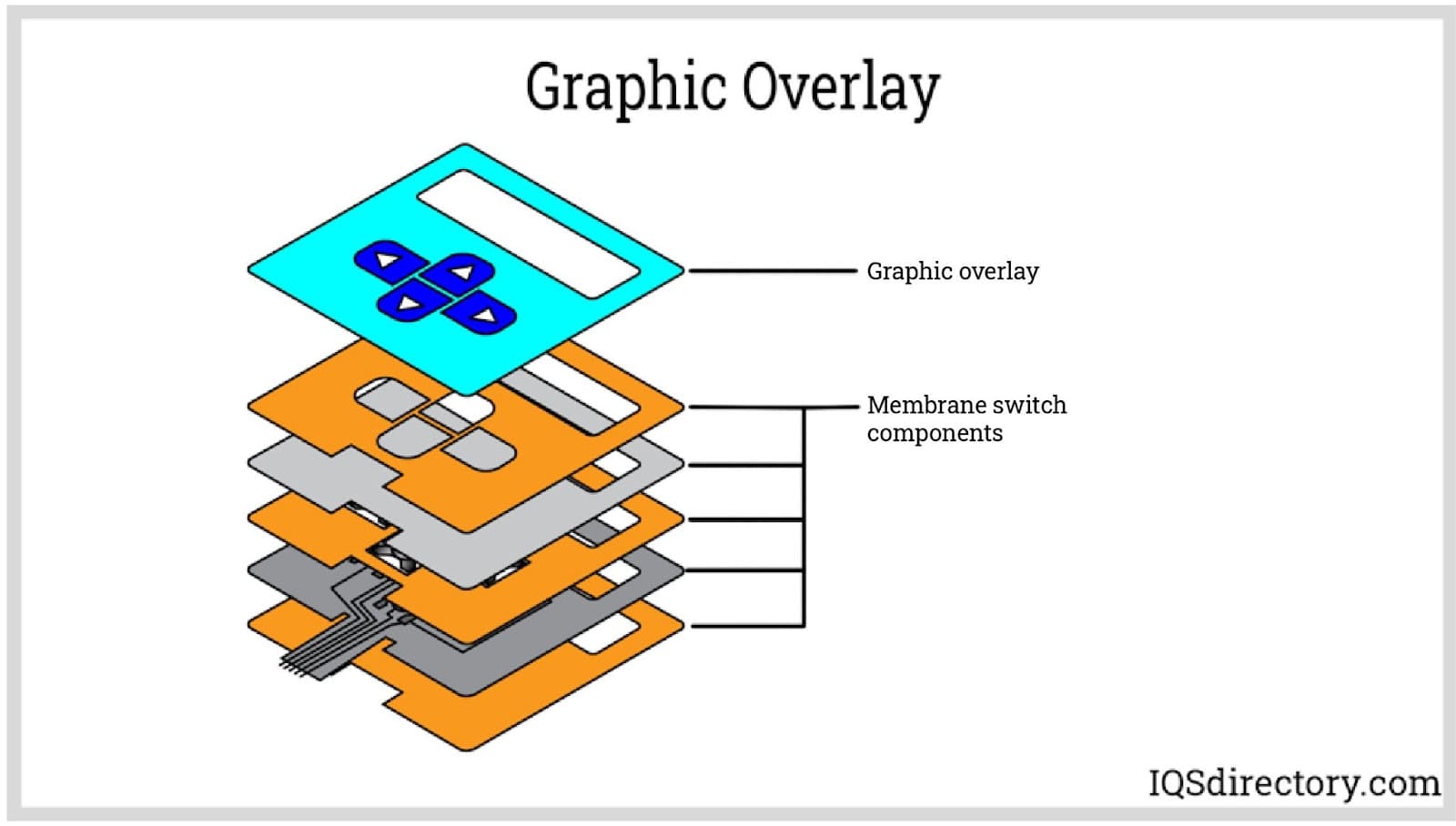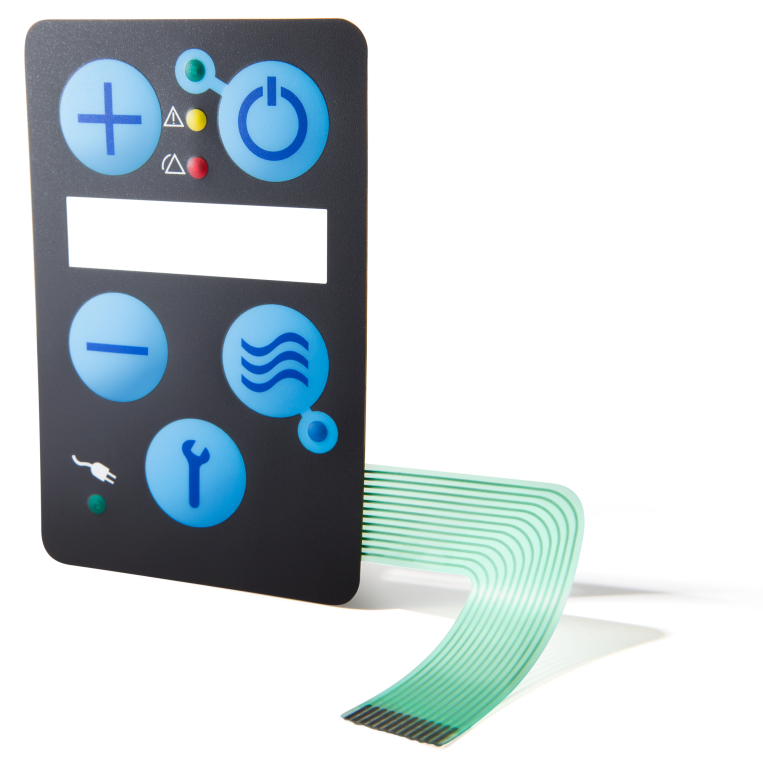Membrane Switch Manufacturer Focused on Intuitive Design
Understanding the Value of Membrane Switch in Modern Electronic Devices and Their Applications
Membrane changes function as an essential component in contemporary electronic devices, providing a reliable interface for customer communication. Their customizable and light-weight nature makes them suitable for a series of applications throughout diverse sectors. Understanding their key elements and benefits can provide insights right into their growing significance. As modern technology proceeds to advance, the evolution of Membrane changes questions about their future applications and style technologies. What exists ahead in this dynamic field?

What Are Membrane Switches?
Membrane switches are important elements in modern electronics, offering as individual interfaces that help with communication between users and tools. These switches contain several layers, consisting of a visuals overlay, a sticky layer, and a circuit layer, all of which interact to produce a durable and practical user interface. The layout permits a level, low-profile service that can be customized regarding dimension, form, and aesthetic look, making them suitable for different applications, from consumer electronic devices to clinical devices. The tactile feedback provided by Membrane switches over improves user experience, while their resistance to dust and wetness makes them suitable for challenging atmospheres. Membrane switches can include features such as backlighting and printed graphics, additionally broadening their use. Their flexibility and toughness make them a recommended selection in industries where reliability and simplicity of use are paramount, ultimately adding to the seamless procedure of contemporary digital tools.
Trick Components of Membrane Changes
While different elements add to the capability of a membrane layer button, 3 main layers play substantial duties in its layout and procedure. The leading layer, commonly made from a sturdy polymer, acts as the user interface for individual communication, typically featuring printed icons and graphics. Below this is the spacer layer, which preserves the necessary distance in between the top layer and the circuit layer. This spacer layer guarantees that the button activates just when pushed, protecting against unintended inputs. Ultimately, the circuit layer has conductive traces that finish the electric circuit when the top layer is depressed. These traces can be made from various materials, including copper or silver. Together, these parts develop a robust and dependable device that is small and flexible, suitable for a vast array of digital applications, from home appliances to clinical devices. Understanding these vital elements is crucial for appreciating the overall capability of Membrane switches.
Advantages of Using Membrane Switches

Membrane Switch Production Process
Recognizing the Membrane switch production process discloses the elaborate actions associated with generating these vital components. The process commonly starts with the design stage, where designs and specifications are produced making use of specialized software. Following this, the graphic overlay is published on an adaptable substrate, frequently making use of high-resolution printing strategies to ensure clarity and precision.Next, the sticky layers are used, which offer to bond the different components with each other. The circuit layers, made from conductive inks or materials, are after that printed onto a separate substratum. These layers are thoroughly straightened and laminated to produce a functional switch.After setting up, the buttons undertake examining to confirm performance and longevity. Quality assurance actions are carried out throughout the procedure to determine and rectify any type of flaws. Lastly, the finished Membrane switches are packaged and gotten ready for circulation, all set to fulfill the needs of modern electronic applications.
Applications of Membrane Switches in Various Industries
Membrane buttons are significantly made use of throughout numerous sectors, specifically in clinical tools and customer electronic devices. In the clinical field, they offer trustworthy control user interfaces for gadgets that need accurate operation. Similarly, in customer electronic devices, these switches enhance customer communication by providing smooth and responsive go right here user interfaces.
Medical Tools Control
Various modern clinical devices utilize Membrane buttons for structured procedure and improved individual interaction. These buttons offer a trustworthy, long lasting interface for a variety of applications, consisting of diagnostic tools, individual tracking systems, and surgical tools. Their adjustable designs permit certain layouts that can suit the distinct demands of health care professionals, making certain intuitive navigating and reliable access to essential functions. Furthermore, Membrane buttons are resistant to pollutants, making them suitable for clean and sterile atmospheres. The responsive feedback they use can improve individual self-confidence, minimizing the threat of errors throughout important clinical treatments. In general, the assimilation of Membrane switches in clinical tools considerably contributes to enhanced functional efficiency and client safety and security in healthcare settings.
Customer Electronic Devices Interfaces
In the domain name of customer electronics, Membrane switches play an essential function in boosting user interfaces across a vast array of devices. These switches are essential to items such as remotes, microwaves, and gaming consoles, offering a effective and straightforward interface. Their design enables for a smooth assimilation of graphics and capability, making it possible for manufacturers to create sleek, contemporary aesthetics without compromising usability. Membrane switches are also known for their sturdiness, often enduring comprehensive use and exposure to different ecological problems. Additionally, they can include functions like backlighting and tactile feedback, further improving the user experience. As consumer demands for sophisticated yet intuitive user interfaces expand, Membrane changes remain to be an essential element in progressing digital gadget functionality.
Layout Factors To Consider for Membrane Changes
Designing effective Membrane switches over calls for cautious attention to various variables that affect both performance and user experience. One vital factor to consider is the option of materials, as they can influence longevity, responsive feedback, and visual charm. Choosing a suitable adhesive is essential for ensuring long-term adhesion and resistance to ecological factors.In addition, the format and style of the button have to fit user interaction, with switch sizes and spacing maximized for ease of usage. The consolidation of graphics and labeling ought to focus on clarity and presence under different lights conditions.Consideration of electric attributes, such as actuation force and switch level of sensitivity, will boost the responsiveness of the Membrane button. Moreover, the style should fit manufacturing processes to assure cost-effectiveness and timely manufacturing. On the whole, a well-thought-out layout enhances both the user and the performance experience of Membrane buttons in modern electronic devices.

Future Patterns in Membrane Switch Modern Technology
As technology continues to develop, Membrane buttons are positioned to incorporate brand-new advancements that will improve their functionality and application in different fields. One substantial fad is the incorporation of resilient and versatile materials, which will enhance the life expectancy and dependability of these buttons. Improved surface area structures and adjustable graphics are likewise expected, enabling for more intuitive user interfaces.Moreover, the integration of smart technology, such as touch-sensitive surface areas and haptic responses, is anticipated to enhance individual interaction, making Membrane switches over extra receptive and appealing. Additionally, advances in published electronic devices will enable more intricate wiring within thinner accounts, better broadening style possibilities.Sustainability will additionally play a crucial function in future developments, as manufacturers discover green products and production procedures. Generally, these fads will guarantee that Membrane changes remain indispensable and appropriate in a progressively electronic and interconnected world.
Frequently Asked Concerns
How Do Membrane Switches Compare to Traditional Mechanical Buttons?
Membrane switches offer benefits over standard mechanical switches, including minimized size, lighter weight, and improved resilience. They generally offer a secured surface, boosting resistance to dust and wetness, making them ideal for diverse additional info applications.
What Products Are Commonly Used in Membrane Switch Building And Construction?

Can Membrane Switches Withstand Extreme Environmental Issues?
Membrane switches can hold up against extreme ecological conditions, depending upon their design and materials. Premium constructions typically include resilience versus temperature level changes, moisture, and direct exposure to chemicals, making them suitable for different requiring applications across markets.
For How Long Do Membrane Changes Commonly Last Before Failing?
Membrane switches over typically exhibit a life-span varying from 1 to 10 million actuations, depending on elements such as use regularity, ecological conditions, and manufacturing high quality. Routine upkeep can expand their durability and operational reliability substantially.
Are Membrane Changes Adjustable for Certain Applications?
Membrane buttons are without a doubt customizable for particular applications. They can be tailored in functionality, design, and size, enabling makers to satisfy special individual demands and enhance product aesthetic appeals while preserving operational efficiency and resilience. Membrane buttons are essential parts in modern-day electronic devices, serving as user interfaces that facilitate communication in between gadgets and customers. The responsive responses provided by Membrane changes enhances user experience, while their resistance to dirt and wetness makes them perfect for challenging settings. The unification of graphics and labeling need to focus on clarity and presence under different lighting conditions.Consideration of electric attributes, such as actuation force and button sensitivity, will improve the responsiveness of the Membrane switch. Boosted surface area textures and personalized graphics are likewise anticipated, permitting for more instinctive individual interfaces.Moreover, the assimilation of wise technology, such as touch-sensitive surface areas and haptic comments, is More Help expected to boost user communication, making Membrane switches over much more engaging and receptive. Membrane changes deal advantages over traditional mechanical switches, consisting of decreased dimension, lighter weight, and improved toughness.